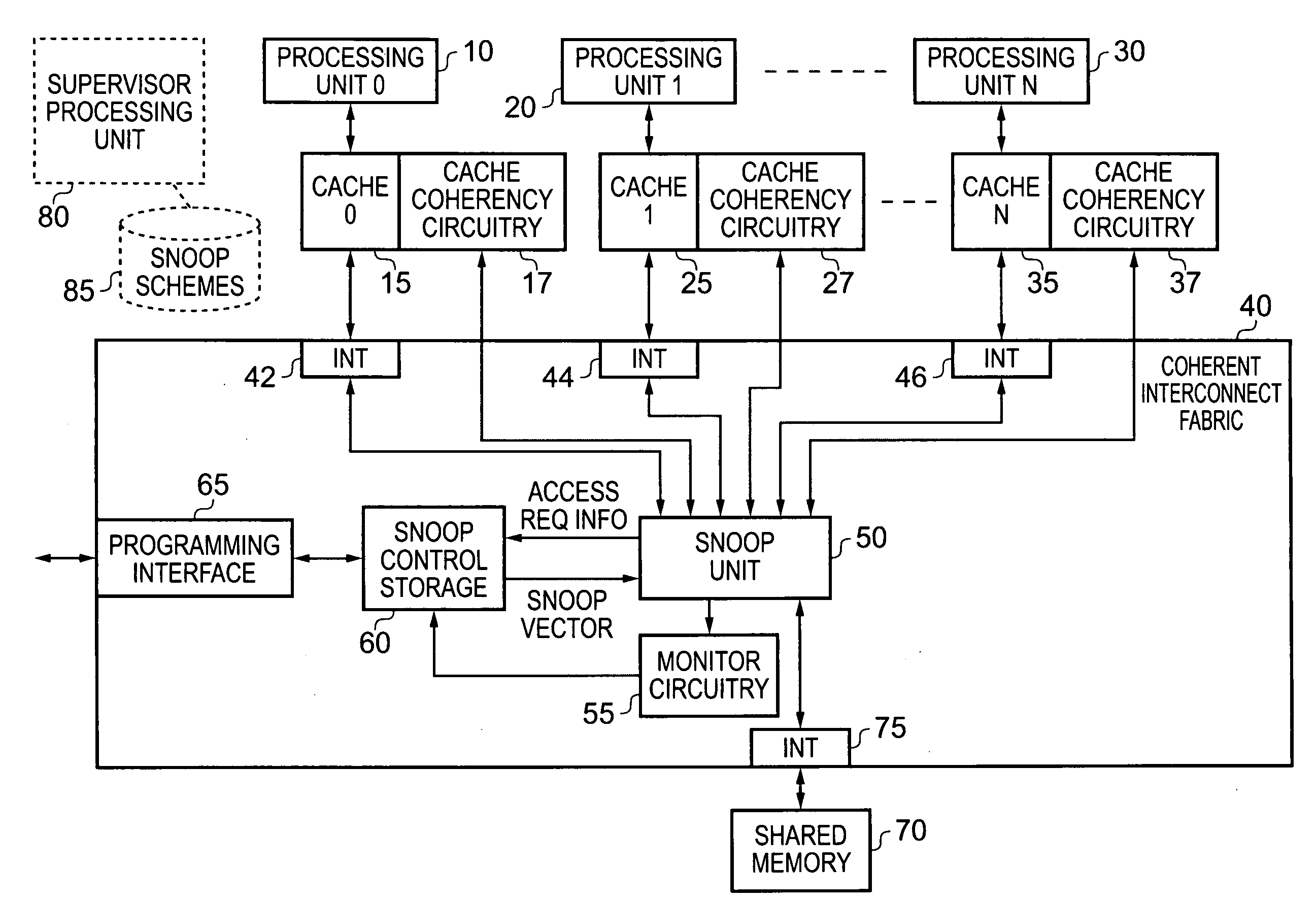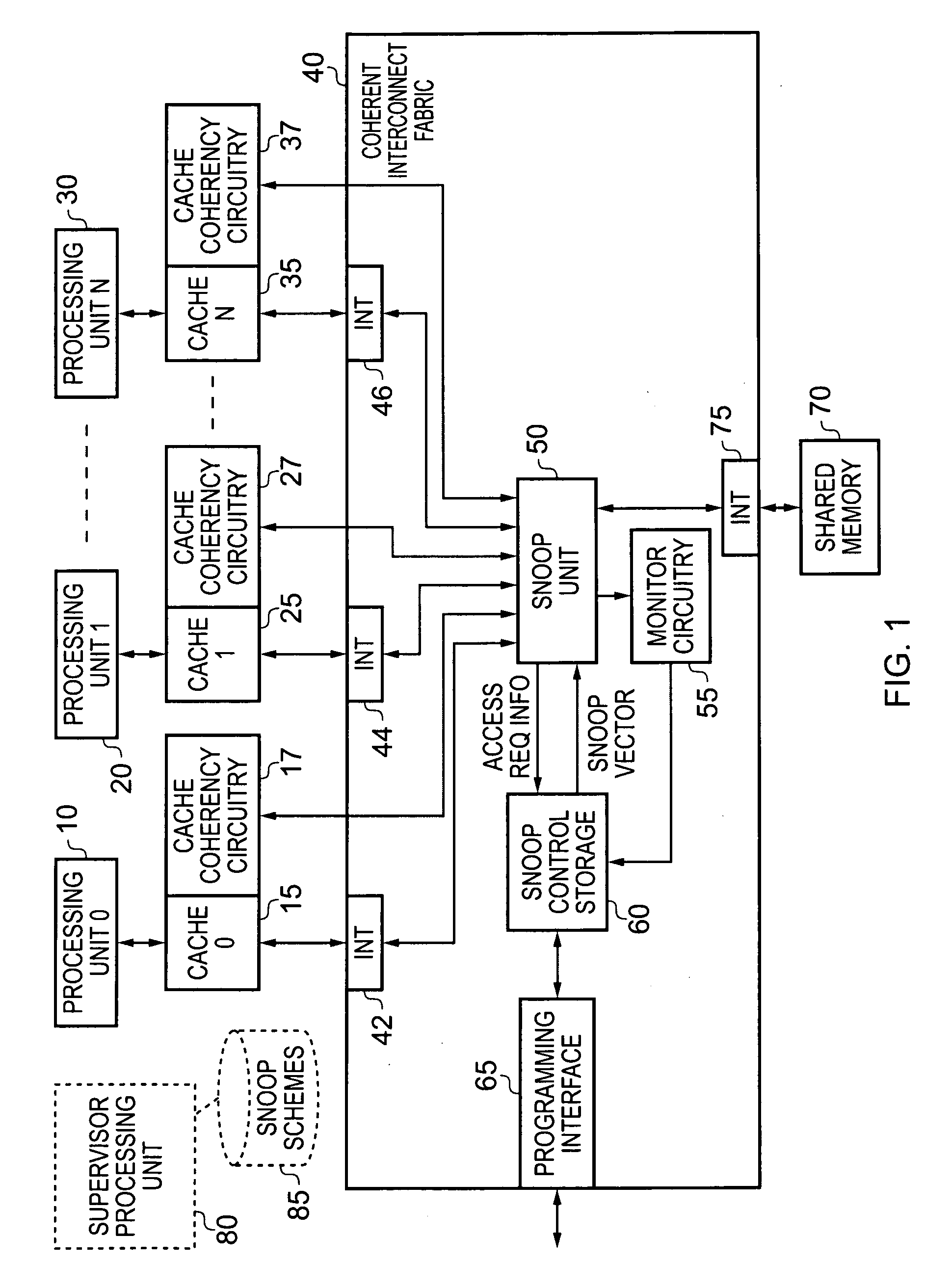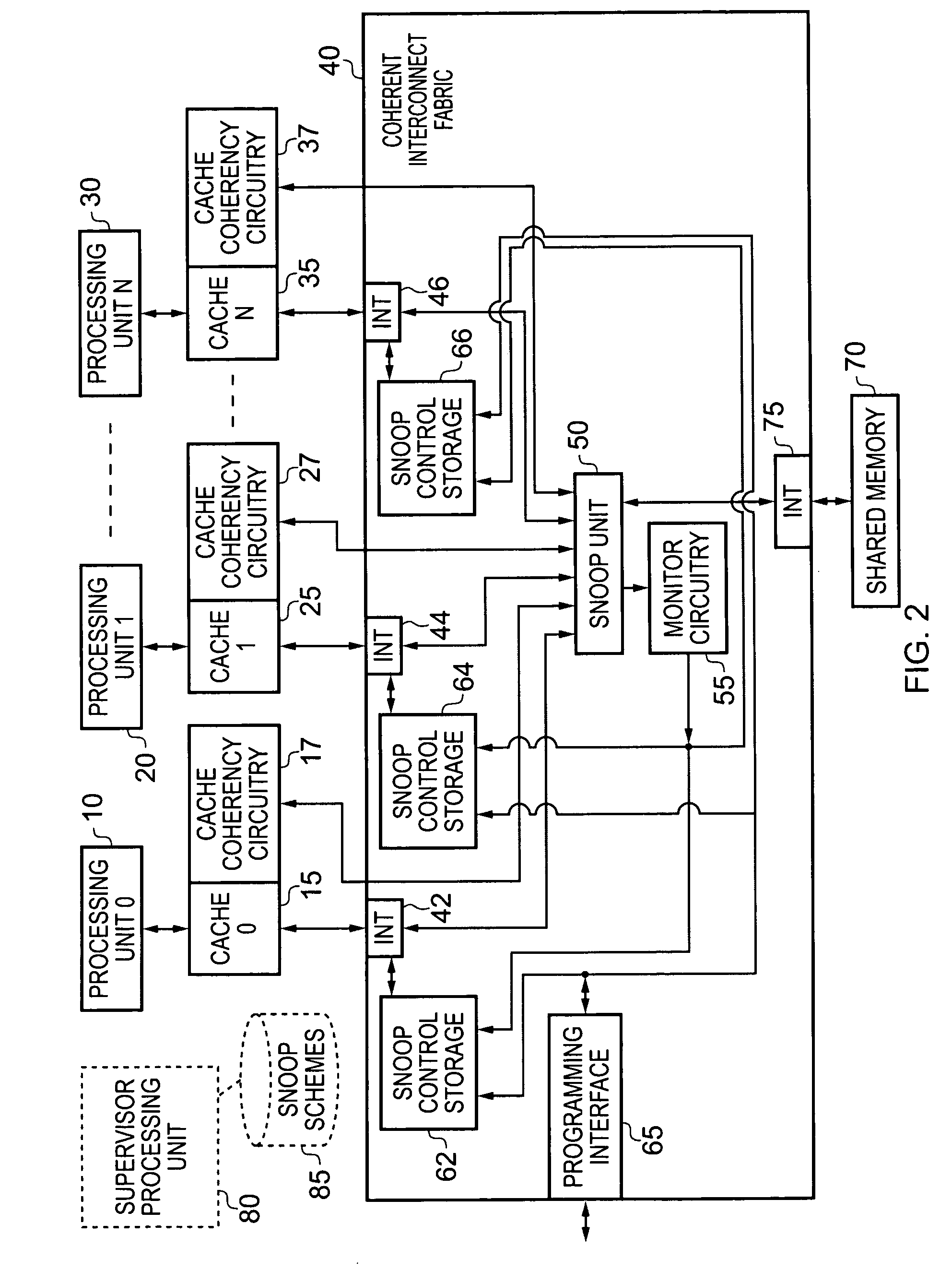Data processing apparatus and method for managing snoop operations
a data processing apparatus and data processing technology, applied in the field of cache coherency management techniques, can solve the problems of energy consumption, data specific to a particular process cannot be guaranteed to be exclusively used by a particular processor, and complicate the problem of data coherency, so as to optimize snooping behaviour and high performance
- Summary
- Abstract
- Description
- Claims
- Application Information
AI Technical Summary
Benefits of technology
Problems solved by technology
Method used
Image
Examples
Embodiment Construction
[0061]FIG. 1 is a block diagram of a data processing apparatus in accordance with one embodiment of the present invention. A plurality of processing units 10, 20, 30 are provided, and at least two of those processing units will have a local cache associated therewith. In the embodiment illustrated in FIG. 1, each of the processing units 10, 20, shown have a local cache 15, 25, 35 associated therewith. Each local cache also has cache coherency circuitry 17, 27, 37 associated therewith which is used to employ a snoop-based cache coherency protocol to ensure data accessed by each processing unit is up-to-date.
[0062]The various processing units and associated caches are coupled to the coherent interconnect fabric 40, the coherent interconnect fabric 40 also being connected to shared memory 70. The coherent interconnect fabric 40 allows multiple devices to be interconnected, with each device connecting to a particular interface of the coherent interconnect fabric 40. Hence, in the exampl...
PUM
 Login to View More
Login to View More Abstract
Description
Claims
Application Information
 Login to View More
Login to View More - R&D
- Intellectual Property
- Life Sciences
- Materials
- Tech Scout
- Unparalleled Data Quality
- Higher Quality Content
- 60% Fewer Hallucinations
Browse by: Latest US Patents, China's latest patents, Technical Efficacy Thesaurus, Application Domain, Technology Topic, Popular Technical Reports.
© 2025 PatSnap. All rights reserved.Legal|Privacy policy|Modern Slavery Act Transparency Statement|Sitemap|About US| Contact US: help@patsnap.com



